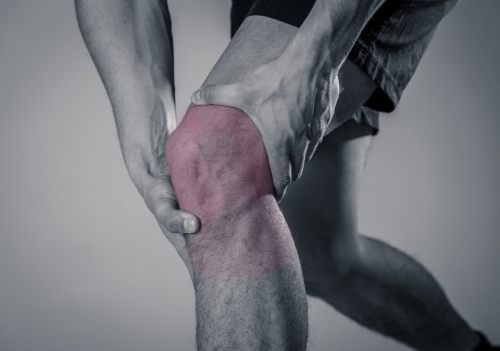
MEDICALLY SPEAKING, "referred pain" means that the pain you're experiencing on one part of your body isn't the actual source of the problem. An extreme but straightforward example of the referred pain concept is in the case of heart attacks. You may recall that one sign of a heart attack is a sensation of pain in the jaw. That doesn't mean there's a problem with your jaw. It's a problem with your heart that is "referring" pain to the jawline. With knee pain, there are some considerations to make in deciding whether the pain is caused by a knee problem or an issue in another part of the body that is referring pain to the knee.
Though it may seem strange on the surface, it's relatively common that the first and only sign of a problem with the hip joint is the onset of knee pain. In people who have arthritis, referred knee pain can often delay the diagnosis of a hip problem. It can be especially problematic if a provider who doesn't specialize in orthopedics is treating the pain. Referred pain is different than radiating pain. Whereas radiating pain tends to travel along an identifiable path, "from point A to point B," referred pain seems to come from the place it's being felt – in this case, the knee, even though the problem is in the hip. One classic signal of osteoarthritis in the hip is referred pain to the groin, lower thigh and knee.
In addition to hip problems being one possible root cause of referred knee pain, so too are the feet. The way we walk has a significant effect on our knee joints, especially over time. For example, if the feet roll too deeply inward or outward while walking, the lower part of the leg is forced to move in a way that puts additional strain and pressure on the knee with every step. People who have a limited range of motion in their ankles also tend to have referred pain in the knees. A significant leg-length discrepancy can also create a referred pain situation in the knees. One completely modifiable risk factor for referred knee pain from foot problems is ill-fitting footwear. Those "well-loved" sandals, no matter how comfortable they are, could be putting your knees at unnecessary risk. Remember, your knees are shock absorbers. So give them the best cushion you can by choosing supportive shoes that are in good condition.
Your iliotibial band, or IT band for short, is a thick band of tissue that extends along the outer thigh, from the hip to the knee. It's responsible for the efficiency with which we can walk and run. Especially in athletes who repeatedly flex and extend the knee, the IT band can become irritated over time, leading to referred outer knee pain. Physiologists, physical therapists and orthopedic specialists are usually able to spot a problem with the IT band quickly. IT band issue can be tough to treat. They require quite strong commitment from the patient to do proper stretching exercises and to modify training regimens to alleviate irritation of the area so that inflammation can decrease. However, IT band problems do respond well to a diligent commitment to conservative treatment. Conservative treatment can often be all that's necessary to make the referred knee pain go away.
Of course, not all sources of knee pain are due to a problem with another part of the body. Some are, in fact, the result of a problem with the knee itself. Either way, getting to the bottom of the pain is crucial. Journaling or otherwise keeping track of the characteristics of your knee pain can help before you see a doctor about it. Where on the knee do you feel the pain? Which activities worsen or lessen the pain? What times of day does the pain appear? Your ability to precisely describe these things is a valuable way to assist your doctor in accurately diagnosing and treating the problem that is causing the knee pain.
